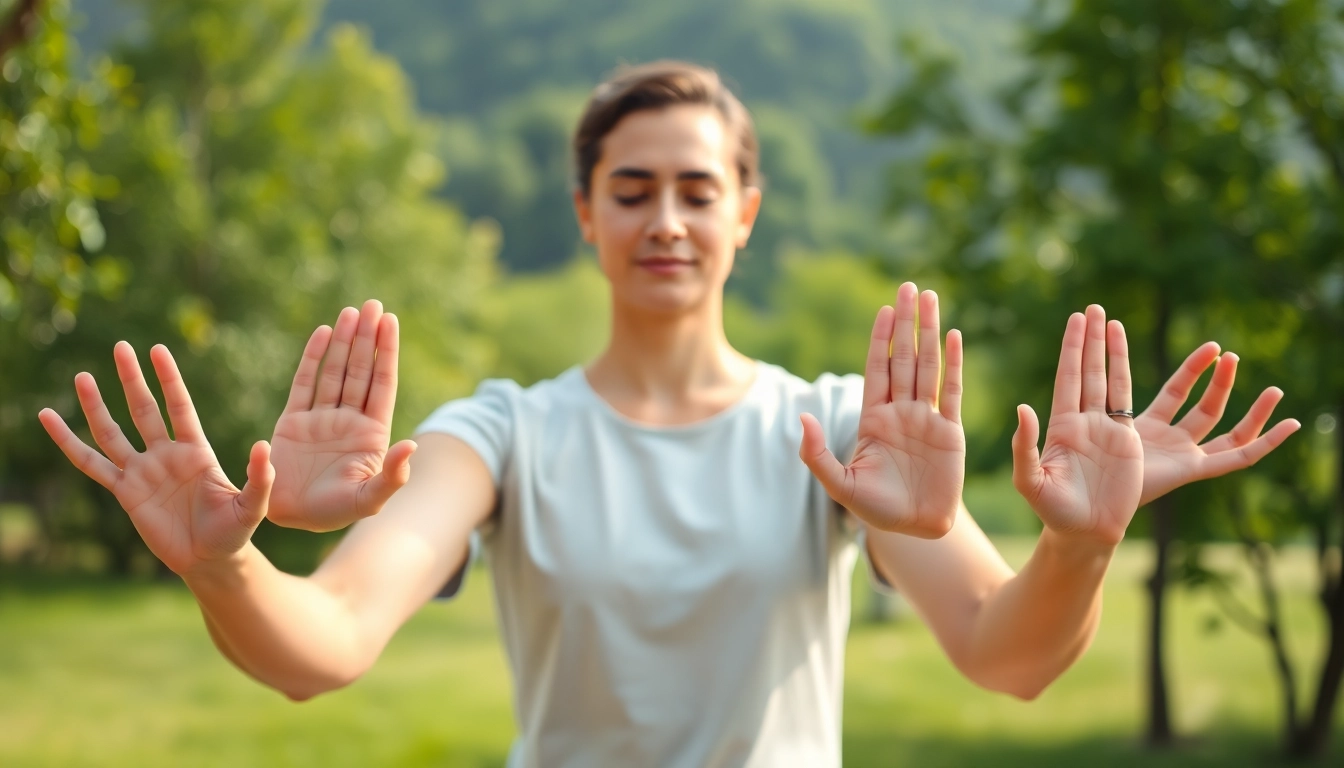Understanding Yoga Mudras
Definition and Origins of Yoga Mudras
Yoga mudras are symbolic hand gestures used in the practice of yoga and meditation, originating from ancient Indian traditions. Derived from the Sanskrit word “mudra,” which means “gesture” or “seal,” these hand positions serve various purposes in channeling energy and enhancing mindfulness. Mudras can be found in various spiritual practices, including Buddhism and Hinduism, where they are believed to store and transmit energy.
Historically, yoga mudras evolved as tools for communication and spiritual awakening. They were used by ancient sages and yogis to ensure a more profound connection between the practitioner and universal energies. In essence, each mudra acts like a lock, and through particular hand and finger positions, it opens the door to deeper awareness and a heightened state of being.
Types of Yoga Mudras
There are numerous types of mudras, categorized based on their functions and the benefits they provide. Here are some prominent types:
- Hand Mudras: These involve various finger positions, such as Gyan Mudra, which involves touching the tip of the index finger to the thumb, enhancing knowledge and concentration.
- Body Mudras: These combinations of body postures and hand placements encourage alignment and energy flow throughout the body.
- Facial Mudras: Utilized in practices like yoga nidra, these gestures can express emotions and stabilize mental states.
Importance in Yoga Practices
Incorporating yoga mudras into yoga practices is significant for various reasons:
- Energetic Alignment: Mudras help coordinate and enhance prana—the life force energy—within the body, resulting in improved physical and mental clarity.
- Meditation Enhancement: Using mudras during meditation can deepen awareness and create an atmosphere of tranquility.
- Emotional Regulation: Certain mudras can assist in balancing emotions and alleviating stress, allowing for a more holistic yoga experience.
Benefits of Practicing Yoga Mudras
Physical Benefits of Yoga Mudras
Practicing yoga mudras is not only about spiritual and mental enhancement; they also offer physical benefits:
- Boosts Immunity: Certain mudras can strengthen the immune system by promoting balance within bodily systems.
- Aids Digestion: Mudras like Apan Mudra are believed to aid digestion and metabolic function.
- Pain Relief: Regular practice of specific mudras can alleviate headaches and other forms of chronic pain.
Mental and Emotional Advantages
The mental and emotional advantages of yoga mudras are profound:
- Mindfulness and Focus: Engaging in mudras can help ground the mind, promoting clarity and focus during meditation.
- Calmness: Practicing mudras aids in reducing anxiety and promoting a sense of inner peace.
- Emotional Stability: Certain mudras can help regulate emotional fluctuations, making them beneficial for those experiencing stress.
Spiritual Significance of Yoga Mudras
Yoga mudras also embody extensive spiritual significance, acting as tools for spiritual growth:
- Energy Manifestation: They facilitate the flow of energy through the chakras, aiding in spiritual awakening and profound experiences of connection.
- Harmony with the Universe: When practiced consistently, mudras can align personal energy with universal energy, creating a sense of belonging to something greater.
- Introspection: Engaging with mudras promotes a deeper introspection, allowing practitioners to explore their spiritual beliefs and personal growth.
How to Practice Yoga Mudras
Guidelines for Beginners
If you’re new to yoga mudras, here are some essential guidelines for effective practice:
- Start with Basic Mudras: Begin with simple mudras, such as Gyan Mudra or Prithvi Mudra, which are easy to perform yet potent.
- Select a Comfortable Position: Sit in a comfortable position such as Padmasana or Sukhasana, ensuring your back is straight and your mind is calm.
- Limit Distractions: Find a quiet space where you can focus entirely on your practice.
Integrating Mudras into Yoga Sessions
Integrating mudras with your regular yoga practice can be transformative:
- Pairing with Asanas: Use mudras during asanas to enhance energy flow, such as combining Gyan Mudra with seated forward bends.
- During Pranayama: Incorporate mudras during breathing exercises to amplify benefits and deepen breath awareness.
- At the Beginning or End: You can perform mudras at the start of your yoga session to set intent or at the end for grounding and reflection.
Common Mistakes to Avoid
To make the most of your yoga mudra practice, avoid these common pitfalls:
- Rushing the Practice: Take your time to understand each mudra fully; rushing can lead to improper technique and reduced benefits.
- Neglecting Comfort: Ensure that your hand positions are comfortable and that you are not straining your fingers or wrists.
- Ignoring Breath: Always connect mudras with conscious breathing to maximize their effectiveness.
Specific Yoga Mudras and Their Uses
Key Mudras to Enhance Meditation
Several specific mudras can enhance your meditation practice significantly:
- Gyan Mudra: Known as the Mudra of Knowledge, it helps in concentration and reducing distractions during meditation.
- Chin Mudra: It promotes alertness and awareness, making it ideal for mediation grounded in mindfulness.
- Shuni Mudra: This mudra enhances patience and discipline, allowing for a deeper meditative experience.
Yoga Mudras for Stress Relief
For those seeking relief from stress and anxiety, specific mudras can be particularly effective:
- Apan Mudra: It assists in detoxification and calming the mind, making it ideal for reducing stress.
- Surya Mudra: This mudra can energize the mind and body while simultaneously alleviating feelings of fatigue and anxiety.
- Prithvi Mudra: Promotes a sense of grounding and stability, which is beneficial in stressful situations.
Enhancing Energy Flow with Yoga Mudras
Incorporating mudras can enhance the flow of energy throughout your body:
- Vayu Mudra: It is used to calm the mind and promote better circulation, ensuring that energy flows without obstruction.
- Varuna Mudra: Helps to balance water elements in the body, promoting purification and vitality.
- Yoni Mudra: By combining it with breath work, it can intensify the flow of prana throughout the body.
Advanced Techniques and Tips for Effective Practice
Combining Mudras with Breathing Techniques
For advanced practitioners, combining mudras with specific breathing techniques can yield profound results:
- Ujjayi Pranayama: Perform Gyan Mudra while practicing this soothing breath technique, enhancing concentration and calm.
- Nadi Shodhana: Incorporate Vayu Mudra during alternate nostril breathing to balance the body’s energies.
- Bhramari: Use Apan Mudra during this humming breath technique to amplify grounding effects.
Creating a Personal Yoga Mudra Practice
To tailor a personal yoga mudra practice, consider the following steps:
- Identify Goals: Determine what you want to achieve with your practice—be it stress relief, mindfulness, or spiritual fulfillment.
- Select Specific Mudras: Choose mudras that align with your goals, integrating those that support your unique needs.
- Consistency is Key: Commit to a schedule that allows for regular practice, monitoring emotional and physical responses.
Tracking Progress and Benefits
To understand the impact of yoga mudras on your life, tracking progress can be immensely valuable:
- Maintain a Journal: Document feelings before and after practicing mudras to observe mental and emotional shifts.
- Set Milestones: Recognize and celebrate accomplishments—whether it be increased calmness or reduced stress levels.
- Regular Reflection: Take time to reflect on the overall state of well-being and adapt practices as needed to remain aligned with personal growth goals.



